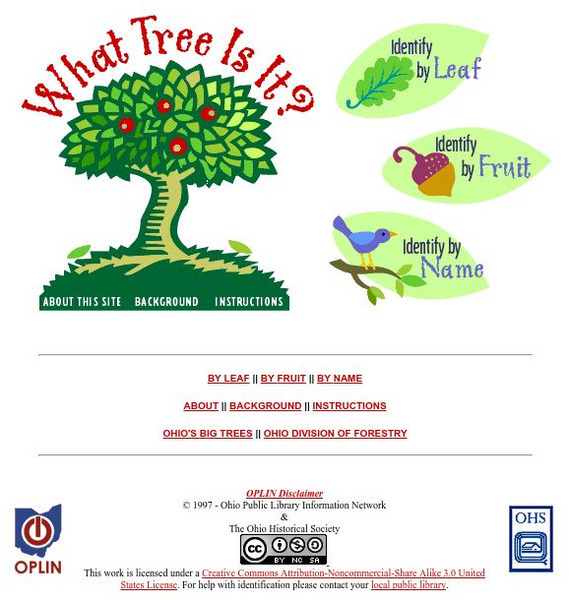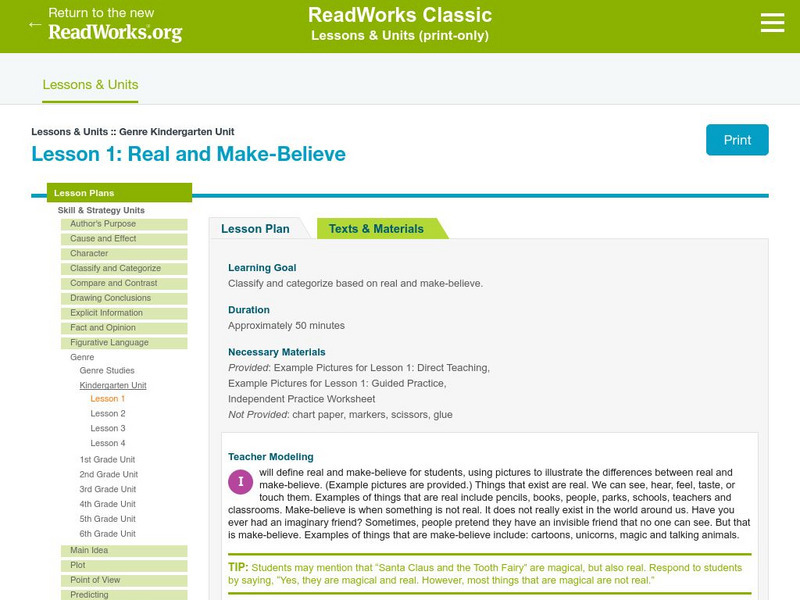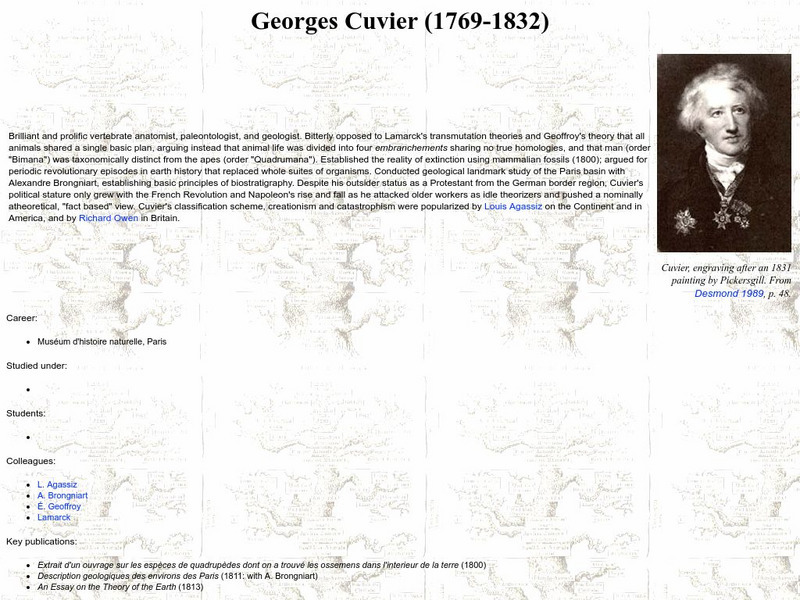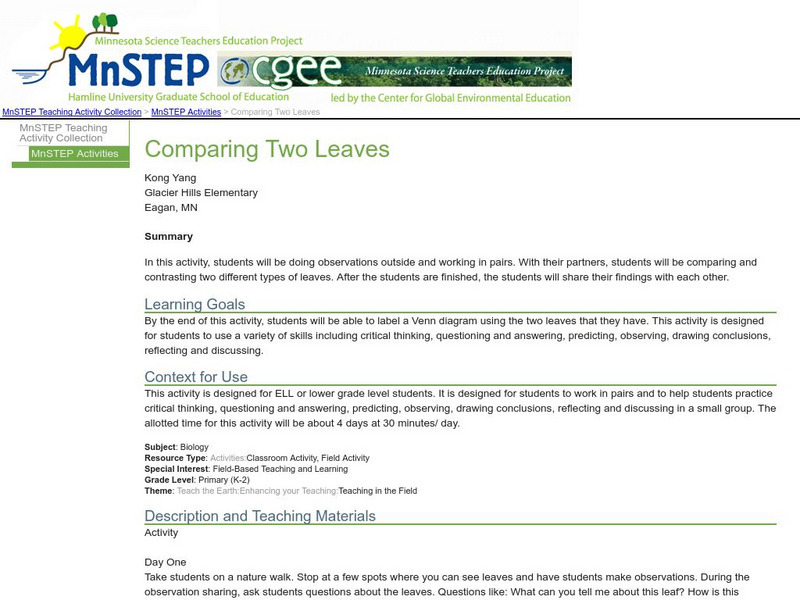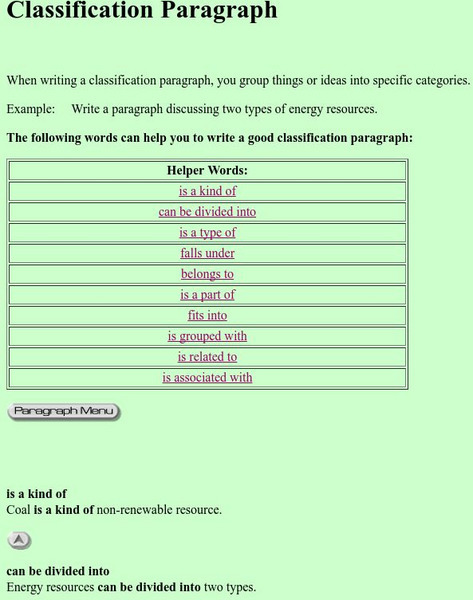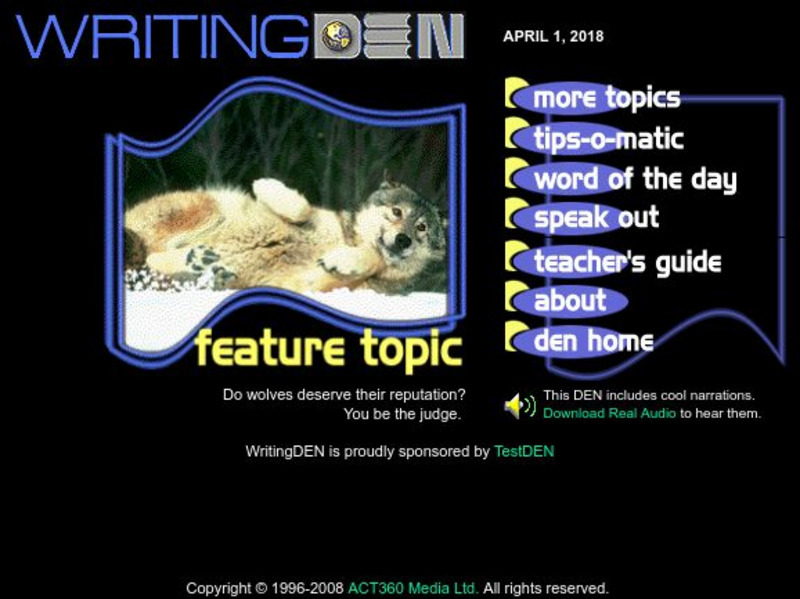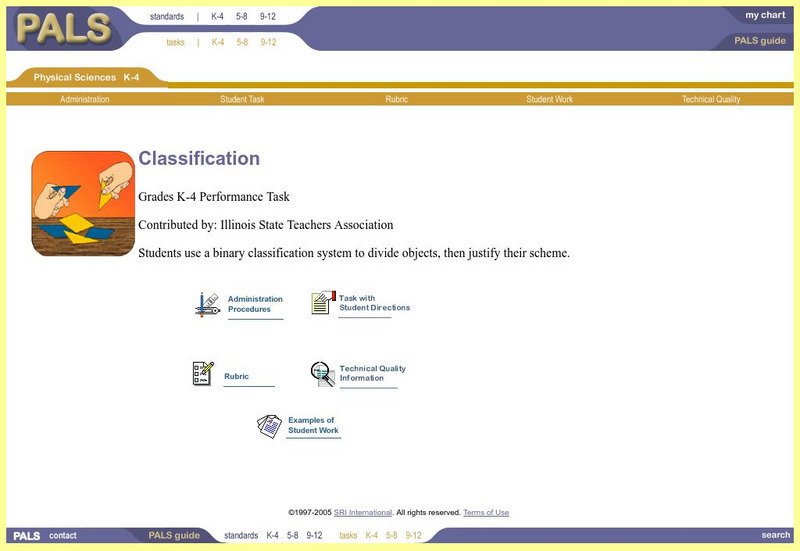Read Works
Read Works: An Owl Is a Bird
[Free Registration/Login Required] This nonfiction passage provides facts about owls. This passage reinforces essential reading comprehension skills. Opportunities for vocabulary acquisition are also included. Several questions and a...
Other
Ohio Public Library: What Tree Is It?
An online resource for tree identification by common name, scientific name, leaf, or fruit.
Annenberg Foundation
Annenberg Learner: Patterns in Mathematics: Guess My Button
This website gives students an opportunity to sort and classify attributes of a group. The applet responds to each selection made and guides student to the next step.
Read Works
Read Works: Genre Kindergarten Unit: Real and Make Believe
[Free Registration/Login Required] A lesson plan where students learn the difference between real and make-believe and practice sorting details into the two categories. Ideas for direct teaching, guided practice, and independent practice...
Soft Schools
Soft Schools: Classification Quiz
Take this interactive, multiple-choice quiz over classification of organisms, then review your score and any missed questions at the end.
Other
Siemens Science Day: Life Science: The Key to It All
In this hands-on science activity, students will create their own unique creatures as well as dichotomous keys so that classmates can identify the creature.
E-learning for Kids
E Learning for Kids: Science: Easter Island: Why Do Young Grow Up to Look Like Their Parents?
Kevin and his grandfather, Omag are going to the zoo. Join them and learn all about animal classification and life cycles.
Center for Educational Technologies
Earth Science Explorer: Diversity
Written for younger students, this site explains biodiversity and links to easy to understand explanations of species and genetic diversity.
Canadian Wildlife Federation
Hinterland Who's Who: Wildlife
Find an wide range of information on an incredibly wide range of species in Canada, including those that are at risk.
Alabama Learning Exchange
Alex: Wanted Dead or Alive!
In this lesson students will identify the characteristics of living and nonliving things.
Alabama Learning Exchange
Alex: Taxonomy: The Importance of Classifying
This is a technology-based, hands-on Biology activity used to introduce the topic of Taxonomy and the importance of classifying. Students will listen to a podcast about classifying every living thing on Earth. Students will then give...
Alabama Learning Exchange
Alex: I Know What I Am, but What Are You?
During this lesson students will develop an understanding of how to classify living things and what creates the distinction among them. They will learn to classify living things by effects, environment, and activity.
CK-12 Foundation
Ck 12: Biology: Classifying Organisms Study Guide
This comprehensive study guide covers the main terms and concepts needed for a unit on classifying organisms.
McREL International
Mc Rel: Whelmer #64 Learning Activity: Liquid Rainbow
An easy to do activity that investigates density and solubility. The activity is presented in lesson plan format that meets NSES standards.
National Center for Ecological Analysis and Synthesis, University of California Santa Barbara
University of California: George Cuvier
This site from the University of California discusses the contributions and ideas of George Cuvier related to classification, evolution, and catastrophism.
Biology Corner
Biology Corner: Fingerprint Classification
A lesson where pupils practice classification by putting fingerprints into groups.
Oregon State University
Oregon State University: Dichotomous Key
An excellent starting point. Get a good description of what the dichotomous key for tree identification is and then directions for using it to identify trees.
Science Education Resource Center at Carleton College
Serc: Comparing Two Leaves
Working in pairs, learners compare and contrast two different types of leaves through observations.
ACT360 Media
Writing Den: Classification Paragraphs
These tips and phrases can help you create a classification paragraph.
ACT360 Media
Writing Den
The WritingDEN includes feature articles with associated words, sentences, and paragraphs to aid in the writing process. Interactive features include pronunciation guides and content quizzes. The Tips-o-matic section offers grammar...
SRI International
Performance Assessment Links in Science: Classification
This activity directs students to set up a two step classification scheme based on the physical traits of color and shape.
SRI International
Performance Assessment Links in Science: Identifying Creatures
Students use a 10 step dichotomous key to identify three mythical animals of their choice. The pictures of the animals and the key are both provided.
Beacon Learning Center
Beacon Learning Center: Packing for the Park
Understand how items are group based on different characteristics through this learning activity.
Polk Brothers Foundation Center for Urban Education at DePaul University
De Paul University: Center for Urban Education: I Can Classify and Summarize Information [Pdf]
A graphic organizer is provided to help students classify information in a nonfiction piece. Then students will write a summary of the information contained in the graphic organizer.



